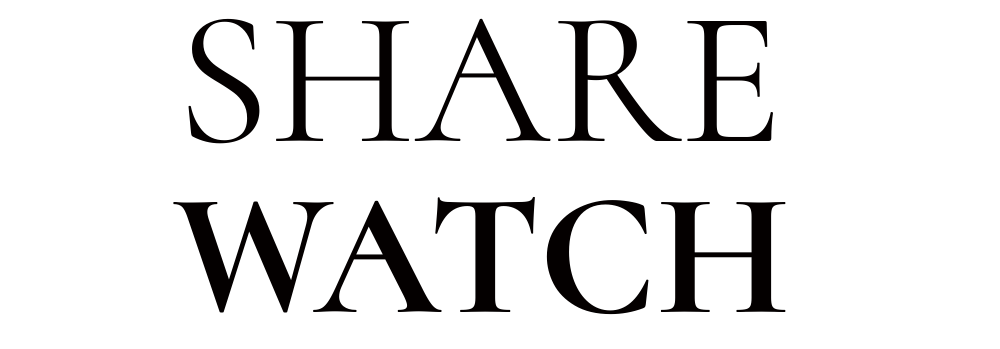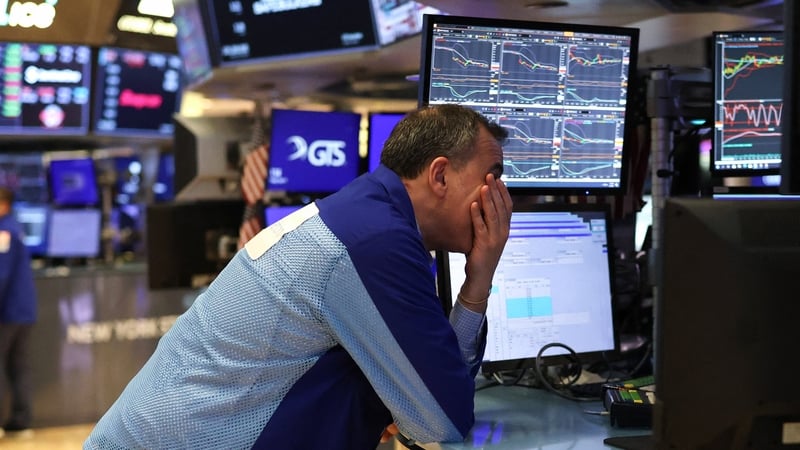US President Donald Trump called 2 April ‘Liberation Day’, others refer to it as ‘Tax Day’ and for Manfred Weber, President of the EPP the largest party in the European Parliament, he described it as ‘Resentment Day’.
The reciprocal tariffs will impact dozens of countries, including some of America’s largest trading partners.
US imports from the European Union, including Ireland, will be subject to tariffs of 20% or higher.
Following the announcement of the US tariffs, European Commission President Ursula von der Leyen described them as a major blow to the world economy.
“Uncertainty will spiral and trigger the rise of further protectionism. The consequences will be dire for millions of people around the globe,” she said.
She also said the EU is finalisng a first package of countermeasures in response to tariffs on steel and “we are now preparing for further countermeasures” if negotiations fail.
It is clear that the EU will react, they’ll study the list, consult with member states and negotiate to try to ratchet down the tariffs, and it will wait and respond in a considered and measured way.

Despite the uncertainty that comes with these tariffs, the EU has a major card to play by building on existing trade agreements and looking into new trade markets.
It is the second biggest economy in the world with more than 450 million people.
The negatives of these tariffs currently outweigh the positives, however there may be some silver linings to the renewed emphasis on the EU’s own competitiveness agenda now.
Increased uncertainty is likely to slow Ireland’s economy, according to the latest Davy report authored by Chief Economist Kevin Timoney, however it reports this will be temporary with Ireland’s economy remarkably resilient.
So if this is considered ‘America’s Brexit moment’, we have already seen how Ireland has been able to adapt to recent challenges.
What opportunities are there for Irish businesses now?
It’s difficult to say how things will play out with so much uncertainty surrounding the tariffs and any retaliatory tariffs.
But there is a reason why US companies are trading with Irish and European companies, and those reasons haven’t changed, according to the Co-Founder and Director of the International Trade Institute, Fiona Luciani.
She acknowledges that everything is uncertain and that it is challenging when it’s unclear as to who is absorbing what, but she also maintains “the non-panic approach is crucial”.
“I hate reflecting on Brexit because we don’t want to talk about that anymore, but it does remind me of Brexit because we were forced into changing everything,” said Ms Luciani.
“We just have an extra layer of complexity now to navigate. I think if we’ve learned anything it’s that Irish companies are so agile in the international market space and there’s massive opportunities now to potentially look at other markets.”
Ms Luciani is advising companies to keep up to date with what’s happening, keep in touch with local trade associations and maintain good due diligence in their operation.

This involves examining supply chains, mapping it out, looking at input terms, international commercial terms to see who currently is paying the duties and taxes on your product. If you’re trading with the US from a regulatory standpoint, the US importer is responsible for paying the 20% import tax.
She believes there is also the opportunity to look at efficiencies and cost savings within the supply chain and to ensure businesses know who is responsible for tariffs along the way and if there’s scope for renegotiation with traders and suppliers.
Other cost savings might be possible through open discussions with transport partners on how to get products off the island.
“We are an island nation and that’s something that we’re really good at doing, so that’s something I see as really positive, we are really agile.”
For companies already trading with the US they understand the trading environment, customs declarations, importing, exporting and all that goes along with trading internationally.
Ms Luciani said the same rules apply if you’re trading with a different trading bloc or different economic bloc.
“Take Asia for instance, I think that there is huge opportunity for Irish exporters,” she said.
“It’s just we have to wait a little bit more and see what happens in future negotiations, or the next negotiations that we’re waiting for Europe to come out with.”
How can the EU use this situation to increase trading opportunities outside the US?
The EU is one of the few actors with the weight to organise a collective response to these tariffs.
The world trade order is changing and it’s not quite clear what the new order will be.
However, the EU is well positioned to offer a model where it’s a reliable and predictable trade system based on the rule of law.
“The US is certainly perceived to be a less reliable partner now given its position on tariffs and given the various threats that have taken place,” said Mark Camilleri, President of the Canada EU Trade and Investment Association which is based in Brussels.
“The old order was really underwritten by the US guarantees of rule of law, openness and all of that, so with the US taking on a different posture it is a less open and reliable partner.”
The EU has said one of the key ways to tackle the current environment is to improve its competitiveness and growth.

Last month, President Trump said that larger tariffs could be placed on the European Union and Canada if they both work together “to do economic harm to the USA”.
However, there is already a system in place for EU-Canada trade, and this is likely to increase.
“I think we’re going to see a lot more emphasis on this relationship, not just as a trading relationship but as a strategic partnership, which is what I believe it is,” Mr Camilleri said.
“We have the comprehensive economic trade agreement between Canada and the EU so that already provides a framework which is very much a legal system or legal order that allows for this, to really grow.
“It has grown significantly since this was signed, merchandise trade increased over 65% and services increased over 73% so these are significant numbers.”
The EU-Canada Comprehensive Economic and Trade Agreement (CETA) entered into force provisionally in 2017, meaning that most of the agreement now applies.
All national (and in some cases regional) parliaments in EU countries need to approve CETA before it can take full effect.
While the agreement has not yet been fully ratified, Mr Camilleri is optimistic that the remaining member states will reconsider their position and potentially move towards ratification.
Is this a good opportunity for the EU to strengthen the single market and focus on its own competitiveness?
In January the European Commission unveiled its flagship Competitiveness Compass.
While Enrico Letta’s report proposed how to improve the EU’s single market and there was also Mario Draghi’s report on how to improve competitiveness.
So, the EU is already focusing on a renewed approach as it recognises its lack of competitiveness and slow growth areas.
“What we’re seeing is the EU move towards implementing these strategies with a view to cutting the red tape in terms of regulation, the regulatory burden on EU companies, and we’re also seeing moves within certain member states, Germany in particular in terms of increasing spending on infrastructure,” said Mr Camilleri.
“”The EU doesn’t have to match the US in terms of aggression, but it does need to match with ambition and that’s certainly fixing the single market and work with like-minded partners abroad such as Canada to provide another option to a power based model which seems to be the underlying theme at the moment,” said Mr Camilleri.
“The best defense is resilience and that means sustainability, reliability and diversification.”

What are some other pros and cons?
“With all very significant changes there are losers, but there are sometimes winners and there may be silver linings in some regards,” said Alan Holland CEO of procurement technology firm Keelvar.
“When you look at exporters to the US across the globe, they will be looking for different markets to sell into, so Asian manufacturers will be looking to Europe and we may see an increase in the number of goods we get from Asia and the prices of those goods coming down.”
The downside to this could be the challenge for local manufacturers competing with Asian manufacturers for some goods.
European industry electronics manufacturers have been losing to Asian manufacturers in terms of competitiveness and that could increase now.
The same is true for car manufacturing, as the German industry is fearful of the volume of cars being made in China.

The EU will potentially have to decide on increased tariffs on Chinese cars or accept it’s a battle they can’t win.
“Much like electronic goods like televisions and so on, we ceded that turf and let Asia dominate, do we now let Asia dominate car manufacturing? That’s a decision to be made,” said Mr Holland.
There are a few unknowns when it comes to forecasting who will become a leader in the uncertain trade order environment.
Mr Holland believes it could become a tripolar world where each trading bloc aims to become more self sufficient.
“I would say one of the growth areas is in military goods in Europe because traditionally Europe didn’t spend a lot on military goods and that’s going to increase rapidly,” he said.
“So Ireland has decisions to make, because if we stay neutral and we’re not going to be producing any military goods, then that’s a growing market that we’re opting to stay out of.”
All the new developments could be viewed as negative for progress in green transitioning.
Sustainability needs a global mindset and a solidarity amongst all major trading blocks to tackle it.
If American leadership does not prioritise sustainability as one of the worlds largest trading blocs, then Europe’s commitment to sustainability will be limited.
It would be challenging to get buy in from large corporates when they see their competitors in other trading blocs not having the same constraints around emissions.
What other potential positives are there for the EU?
The dollar has always been the reserve currency for central banks but the weakening of the dollar could be seen as a signal that international markets are bearish on America’s prospects.
Mr Holland feels that international markets are turning to Europe and to some extend Asia as future leaders in global commerce.
“The dollar has always been the reserve currency for central banks, we might see that mindset shifting and the euro becoming more important and more powerful and that Europe actually becomes the global leader in commerce in the future and becomes that destination of choice for young graduates.”
Top PhD graduates traditionally saw US universities as the destination of choice, but that appears to be changing.
If European universities begin attracting the top research graduates, it has the potential to become the most attractive high growth economy and become world leaders in science, innovation and engineering.
Additional reporting Reuters




